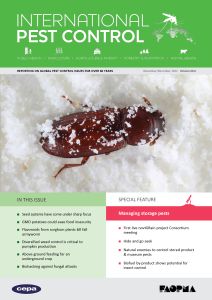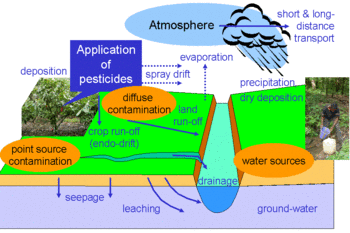Indicators on Eco Bed Bug Exterminators Dc You Should Know
Indicators on Eco Bed Bug Exterminators Dc You Should Know
Blog Article
All about Eco Bed Bug Exterminators Dc
Table of ContentsEco Bed Bug Exterminators Dc Can Be Fun For EveryoneAn Unbiased View of Eco Bed Bug Exterminators DcAll about Eco Bed Bug Exterminators DcThe 3-Minute Rule for Eco Bed Bug Exterminators DcThe 20-Second Trick For Eco Bed Bug Exterminators Dc
Since chemicals are toxic, they are also possibly dangerous to humans, pets, other organisms, and the environment. Individuals who utilize pesticides or frequently come in call with them have to understand the family member poisoning, prospective health effects, and preventative actions to minimize exposure to the products they make use of. Hazard, or risk, of making use of pesticides is the possibility for injury, or the level of risk entailed in utilizing a chemical under a provided collection of problems.
Applicators can decrease or almost eliminate direct exposure-- and therefore lower risk-- by following the label instructions, using personal protective clothes and equipment (PPE), and handling the chemical effectively. More than 95 percent of all pesticide exposures come from dermal exposure, mainly to the hands and forearms. By putting on a set of unlined, chemical-resistant handwear covers, this kind of direct exposure can be nearly eliminated.
The dangerous effects that take place from a single exposure by any route of entrance are labelled "intense effects." The four courses of exposure are facial (skin), breathing (lungs), oral (mouth), and the eyes. Intense toxicity is figured out by taking a look at the facial toxicity, breathing toxicity, and oral toxicity of test pets.
Eco Bed Bug Exterminators Dc Can Be Fun For Anyone
Intense toxicity is measured as the amount or focus of a toxicant-- the a.i.-- required to kill 50 percent of the animals in a test population. This action is typically revealed as the LD50 (dangerous dose 50) or the LC50 (lethal concentration 50). Additionally, the LD50 and LC50 worths are based upon a solitary dose and are recorded in milligrams of pesticide per kilo of body weight (mg/kg) of the guinea pig or in components per million (ppm).
The lower the LD50 or LC50 worth of a chemical product, the higher its toxicity to people and pets. Pesticides with a high LD50 are the least poisonous to people if used according to the directions on the product label. The persistent poisoning of a pesticide is identified by subjecting examination pets to long-lasting direct exposure to the active ingredient.
The chronic toxicity of a chemical is harder than intense poisoning to identify with laboratory analysis. Products are classified on the basis of their loved one acute poisoning (their LD50 or LC50 worths). Chemicals that are identified as very harmful (Toxicity Classification I) on the basis of either oral, facial, or inhalation poisoning must have the signal words threat and POISON printed in red with a skull and crossbones sign prominently displayed on the front panel of the plan tag.
The severe (solitary dose) dental LD50 for pesticide items in this group varies from a trace total up to 50 mg/kg. For example, exposure of a few decreases of a material taken by mouth can be deadly to a 150-pound person. Some chemical products have simply the signal word DANGER, which tells you nothing about the severe poisoning, simply that the item can cause serious eye damage or serious skin irritability
The 8-Second Trick For Eco Bed Bug Exterminators Dc
In this classification, the acute oral LD50 arrays from 50 to 500 mg/kg. A teaspoon to an ounce of this material can be fatal to a 150-pound person (exterminator near me). Chemical items classified as either slightly hazardous or relatively nontoxic (Poisoning Groups III and IV) are needed to have the signal word CAUTION on the pesticide tag

All pesticide toxicity chemical, worths the Consisting of, can be found on the product's Item Safety Data Sheet (MSDS). Pesticide tags and MSDS can be obtained from stores or makes - link https://www.huntingnet.com/forum/members/ecobedbug3xt.html. The signs and symptoms of pesticide poisoning can vary from a mild skin irritability to coma or even fatality.
Because of potential health problems, chemical individuals and handlers should identify the typical signs and signs of pesticide poisoning. The impacts, or symptoms, of chemical poisoning can be generally specified as either topical or systemic.
What Does Eco Bed Bug Exterminators Dc Do?
Dermatitis, or inflammation of the skin, is accepted as the most commonly reported topical impact linked with pesticide direct exposure. Some people often tend to cough, hiss, or sneeze when subjected to chemical sprays.
This signs and symptom generally subsides within a few mins after an individual is eliminated from the direct exposure to the toxic irritant. However, a reaction to a pesticide item that triggers somebody not just to sneeze and cough however likewise to create serious intense respiratory signs is most likely to be a real hypersensitivity or sensitive reaction.
Systemic results are fairly different from topical impacts. They usually happen away from the initial point of call as a result of the chemical being soaked up into and dispersed throughout the body. Systemic impacts typically include queasiness, vomiting, fatigue, headache, and intestinal problems. In innovative poisoning instances, the person may experience changes in heart rate, problem breathing, convulsions, and coma, which can cause death.
Report this page